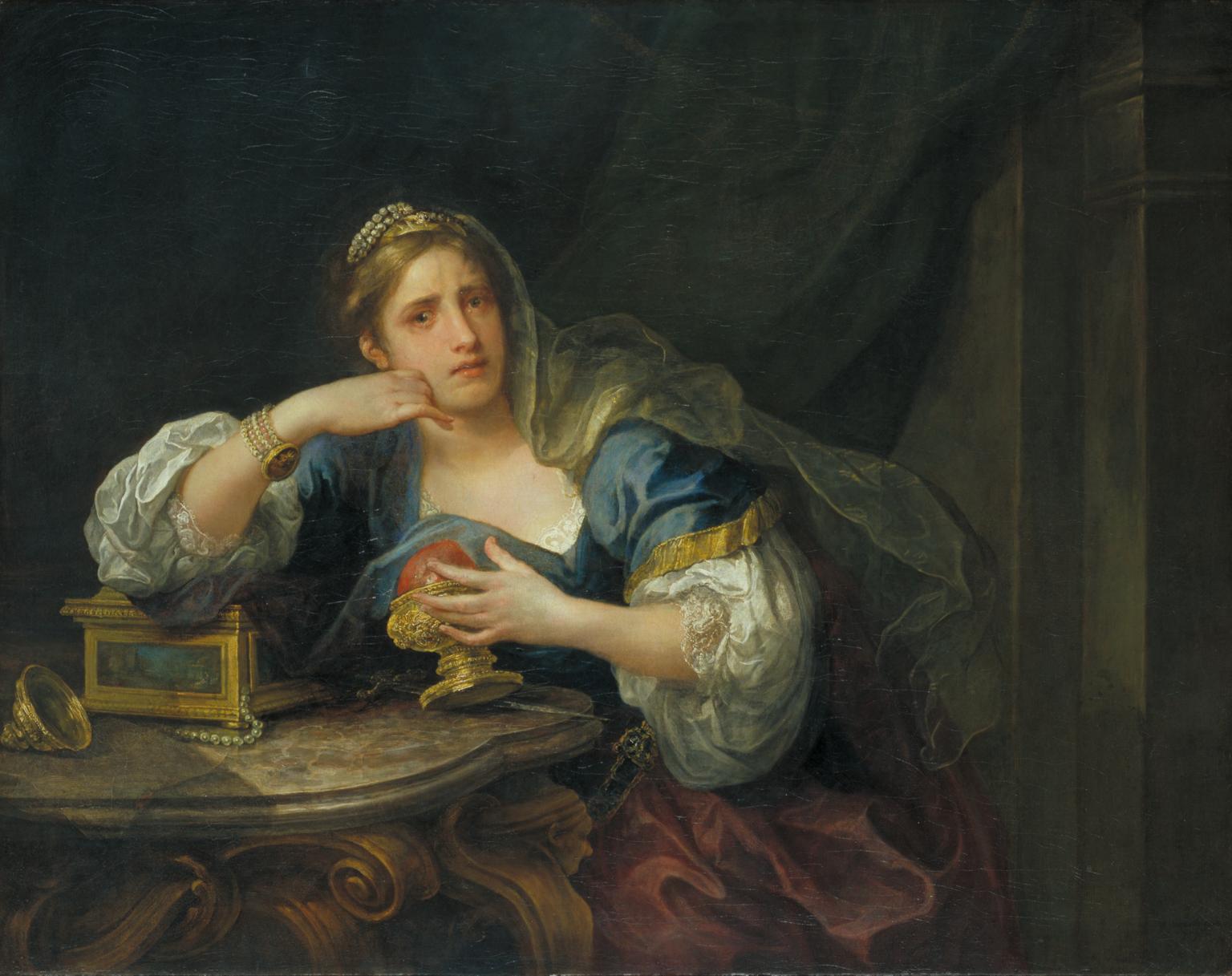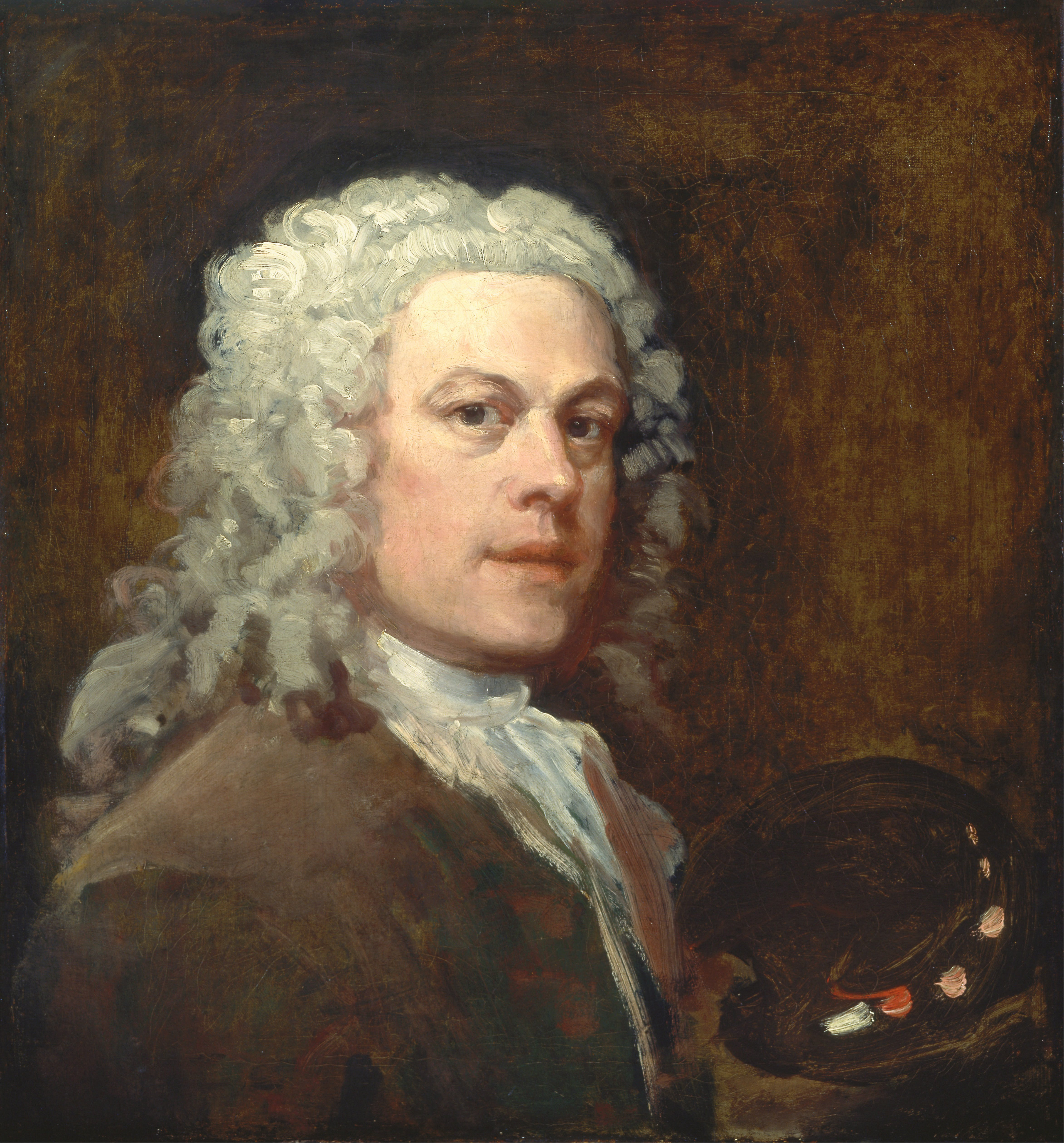William Hogarth (1697–1764) was an eclectic English painter, printmaker and editorial cartoonist known for his satirical prints of morals and scandals of his time. With the invention of the printing press, Hogarth was able to sell his art to the lower and middle classes by printing affordable prints of his artwork. He is considered to be the original creator of what came to be known as the cartoon strip.
Hogarth was also a trained engraver and painter in the Rococo style using soft colors and flowing lines in his work and including serpentine lines in his paintings. As he became more well known he received commissions from the most wealthy and influential in London society. One such man was Sir Richard Grosvenor who paid Hogarth for a painting of any subject matter. "Sigismunda Mourning Over the Heart of Guiscardo" was the result of this commission. The painting was based on a story by Boccaccio about a princess and her new husband Guiscardo who was a commoner with no social standing. When her father found out about the marriage he ordered his guards to kill Guiscardo and deliver his heart to his daughter in a golden cup. Sigismunda is overcome with grief upon receiving her husband’s heart, adds poison to the cup, drinks it and dies.
The painting captures her sorrow and the drama of the moment with the dark background and variance of light and shadow. Hogarth's signature serpentine lines are seen in the folds of her dress, the flow of her arms and hands, and ornamentation of the furniture. Her rich blue dress creates a focal point that draws in the viewer. As his way of signing his painting, Hogarth included a small self portrait of himself in the carved face in the table.
Sir Richard was not pleased with the results and rejected the painting. Insulted, Hogarth refunded his money and displayed the painting in another gallery where it was soundly panned by critics of his day as void of emotion and too disturbing. What do you think?
Heidi
Help us and donate so we will be able to release the new version of DailyArt: http://support.getdailyart.com


 William Hogarth
William Hogarth